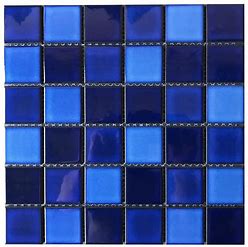Information
-
Document No.
-
Conducted on
-
Location
-
Prepared by
-
Others present:
CPR signage
-
Does the sign contain the following words:<br>"YOUNG CHILDREN SHOULD BE SUPERVISED WHEN USING THIS SWIMMING POOL", and<br>"POOL GATES MUST BE KEPT CLOSED AT ALL TIMES", and<br>"KEEP ARTICLES, OBJECTS AND STRUCTURES AT LEAST 900MM CLEAT OF THE POOL FENCE AT ALL TIMES"
-
How to perform CPR on an infant, child and adult
-
Illustrated by drawings with key words in bold print
-
A Statement that formal instruction on CPR is essential
-
Is there a simple flow sequence for CPR
-
Name of organisation that published the sign
-
is the sign legible from 3 metres
-
Is the sign clearly legible
Barrier - General
-
WINDOWS opening into pool area...<br>If sill is <1800 from ground, window must be either:<br>covered by bars or metal screen. Openings in bars or screen must not be >100mm and must require the use of a tool to remove<br>OR<br>Fixed so it cannot be opened any more than 100mm without the use of a tool
-
Is the barrier a permanent structure?
-
Does the barrier separate the pool from any residential building or place adjoining the premises?<br><br>Note: Residential building is defined as:<br>residential building means a building (such as a dwelling-house, residential flat building or boarding-house) that is solely or principally used for residential purposes, and includes any structure (such as a garage or shed) that is ancillary to any such building, but does not include:<br>(a) a building that merely forms part of a complex of buildings (such as a school or recreational centre) that is principally used for non-residential purposes, or<br>(b) a moveable dwelling, or<br>(b1) tourist and visitor accommodation, or<br>(c) a shed that is ancillary to a swimming pool and the primary purpose of which is to store equipment that is used in connection with the swimming pool (but not a shed of a kind prescribed by the regulations), or<br>(d) a building or structure of a kind prescribed by the regulations.
-
Is the barrier in a good state of repair as an effective and safe child-resistant barrier
Pool Barrier Fencing - Measurements
-
Is finished ground level a permanent stable surface
-
Measure height of fence from top of fence to finished ground (must be >1200mm)
-
Maximum width between verticals 100mm
-
Maximum of 100mm between bottom of barrier and finished ground level
Pool Barrier Fencing <1800mm - NCZs
-
NCZ1: measured vertically on outside face of barrier<br>No handholds or footholds, or objects or plants that will facilitate climbing<br>No projections or indentations with horizontal surface >10mm
-
NCZ2: quadrant measured the outside of the barrier created by 900mm radius down from the top of NCZ1.<br>No handholds or footholds, or objects or plants that will facilitate climbing<br><br>NOTE: NCZ2 is always immediately adjacent to NCZ1 on all barriers
-
NCZ3: quadrant on the outside of barrier created by a 900mm radius UP from the top of the barrier<br>No handholds or footholds, or objects or plants that will facilitate climbing<br><br>Note: If the top of NCZ1 is below the top of the barrier, NCZ3 extends vertically down to the top of NCZ1.
-
NCZ4: 900mm high by 300mm deep rectangular space on the inside of the barrier, aligning with NCZ1.<br>No handholds or footholds, or objects or plants that will facilitate climbing<br><br>Note: Only applies where barrier has vertical openings 10mm - 100mm in width.<br><br>
-
No features or objects that would reduce the height of the barrier to be located within 500mm of the barrier.
Boundary Pool Barrier
-
No less than 1800mm, measured from inside the pool area
-
NCZ5: quadrant of 900mm measured down from the top of the inside of the boundary pool barrier<br>No handholds or footholds, or objects or plants that will facilitate climbing
-
Where internal pool barrier intersects into NCZ5, the top of internal barrier must: <br>be less than 50mm and inter sect at angle between 45 and 13 degrees.<br>OR<br>continue at >1800mm for at least 900mm
Strength and Rigidity
-
Conduct strength and rigidity checks to vertical uprights - 150N with non-dominant hand - expand to <105mm
-
Conduct strength and rigidity checks to posts and footings - apply 330N of force - no breakage or loosening
-
Conduct strength and rigidity to rails/horizontals - apply 250N plus 330N of force - no deformation or breakage
Gates
-
Is the gate kept securely closed?
-
Does gate swing away from pool area?
-
Does gate swing freely through its entire arc of operation - cannot be wedged open
-
Full arc of operation clear of any building or doorway
-
Confirm overall height >1200mm
-
Maximum 100mm under closed gate
-
Vertical spaces no more than 100mm
-
All NCZs clear
-
Test self-closing & latching mechanism:<br>1. Resting on latching mechanism (slightly open)<br>2. From approximately half-open<br>3. From fully open position<br>4. Apply 25kg weight to gate whilst open for 30 seconds. Remove weight and let gate close under own propulsion.
-
Movement of the gate does not:<br>1. Release the latch<br>2. unhinge the gate<br>3. increase gap under gate to >100mm
-
Latch shall not be able to:<br>1. be inadvertently adjusted during operation<br>2. Locked in the 'open' position<br>3. adjusted without use of tools
Overview
-
Take photographs of any non-compliance in the relevant section
-
Take photographs showing the general condition of the barrier here
-
Sketch if required
-
Additional Comments











